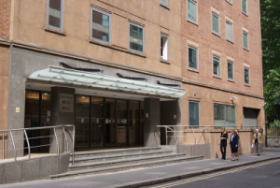New directions on electronic bundles and skeleton arguments issued by Principal Resident Judge Blum
The Immigration and Asylum Chamber of the Upper Tribunal (UTIAC) has this week published new Standard Directions that will apply to all appeals where the parties are represented from 25 September 2023.
 A full copy of the Directions can be read below.
A full copy of the Directions can be read below.
Principal Resident Judge Blum says in a covering letter that all practitioners and users of the UTIAC should familiarise themselves with the requirements of the new Standard Directions.
Judge Blum notes in particular that the Standard Directions now require the party who is appealing to generate the bundle of documents that will be relied on at the hearing.
The original copies of the Standard Directions and the covering letter can be accessed here on the Immigration Law Practitioners' Association (ILPA) website.
__________________________________________________
UPPER TRIBUNAL (IMMIGRATION AND ASYLUM CHAMBER)
__________________________________________________
STANDARD DIRECTIONS – REPRESENTED PARTIES
__________________________________________________
THE UPPER TRIBUNAL HEREBY DIRECTS AS FOLLOWS:
1. NO LATER THAN 10 WORKING DAYS before the hearing, the Appellant is to provide to the Upper Tribunal and the Respondent a composite electronic bundle which complies with the Guidance on the Format of Electronic Bundles in the Upper Tribunal (IAC).
1.1 The composite bundle must contain the following documents and must be structured in the following way:
Part A: The decision of the FtT which is under appeal
The grounds of appeal upon which permission to appeal was granted
The decision of the FtT or Upper Tribunal granting permission to appeal
Any other decision or direction made by the FtT which is relevant to the grounds of appeal
Any response to the notice of appeal (r24) or appellant's reply (r25)
Any decision or order of the Upper Tribunal in the appeal
Part B: Any r15(2A) application to rely on evidence not before the FtT
Any evidence to which the application under r15(2A) relates
Part C: All documentary evidence relied upon by the Appellant before the FtT
Part D: All documentary evidence relied upon by the Respondent before the FtT
2. NO LATER THAN 10 WORKING DAYS before the hearing, any request for the services of an interpreter is to be made in writing, stating clearly the language and any specific dialect required.
3. NO LATER THAN 5 WORKING DAYS before the hearing, the Appellant is to provide to the Upper Tribunal and the Respondent any skeleton argument upon which he intends to rely.
3.1 Any skeleton argument must:
a. Contain sequentially numbered paragraphs
b. Be in not less than 12 point font
c. Be as concise as possible, and not exceed 20 pages of A4
d. Not include extensive quotations from documents or authorities
e. Be cross referenced to the composite bundle thus: [CB/x]
4. NO LATER THAN 2 WORKING DAYS before the hearing of the appeal, the Respondent is to provide to the Upper Tribunal and the Appellant any skeleton argument upon which he intends to rely.
4.1 Any skeleton argument provided by the Respondent is to comply with the requirements in paragraph 3.1 above.
NOTES
i. In these directions, "Appellant" means the party who has been granted permission to appeal to the Upper Tribunal against the decision of the First-tier Tribunal (the "FtT") and "Respondent" means any other person who was a party before the FtT.
ii. These directions apply alongside the requirements of the Tribunal Procedure (Upper Tribunal) Rules 2008 ("the Rules") and the Senior President of Tribunal's Practice Statement.
iii. The directions seek to give effect to the requirement in Rule 2 to deal with cases fairly and justly and all other aspects of the overriding objective. The parties are reminded of their obligation pursuant to Rule 2(4) to help the Tribunal to achieve that objective and to co-operate with the Tribunal generally. In order to comply with that obligation, the parties should not assume that the Upper Tribunal will have access to anything which was before the FtT.
iv. The parties should also take particular note of the requirements of rules 15(2A), 24 and 25 and paragraph 7 of the Practice Statement. There is a presumption that, in the event of the Tribunal deciding that the decision of the FtT is to be set aside as erroneous in law, the re-making of the decision will take place at the same hearing. The parties are expected, therefore, to have complied with rule 15(2A) (by providing any evidence which was not before the FtT) in advance of the 'error of law' hearing.
v. Where the decision of the FtT has been set aside in whole or in part and the Upper Tribunal decides to remake the decision on the appeal at a subsequent hearing, any r15(2A) application and additional evidence upon which the Appellant intends to rely must be inserted into Part B of the composite bundle. The amended version of the composite bundle is to be provided to the Upper Tribunal and the Respondent in accordance with paragraph 1 above.
vi. Where the Respondent intends to rely on additional evidence at a remaking hearing, any application under r15(2A) and any such evidence may be provided in a separate bundle, no later than 10 days before the hearing. Any such bundle must comply with the guidance cited at paragraph 1 above.
vii. These directions must be complied with unless varied, substituted or supplemented by further directions. Any failure to comply with these directions may result in the Upper Tribunal making an order for costs pursuant to its power under Rule 10(3) or by imposing another sanction. Any bundle or skeleton argument which does not comply with these directions may be returned to the party which provided it and may not be relied upon until it is amended so as to comply.
D. Blum
Principal Resident Judge